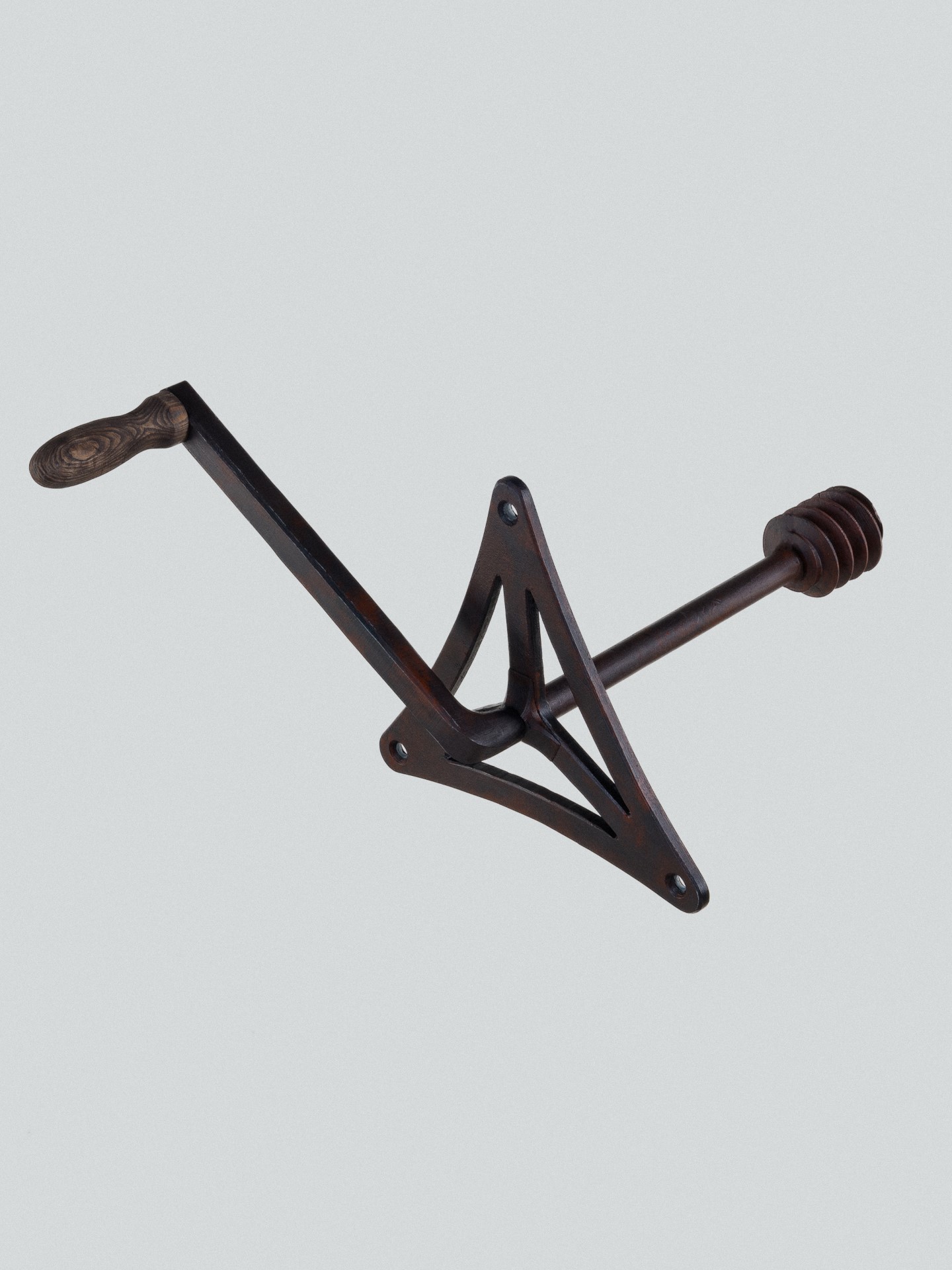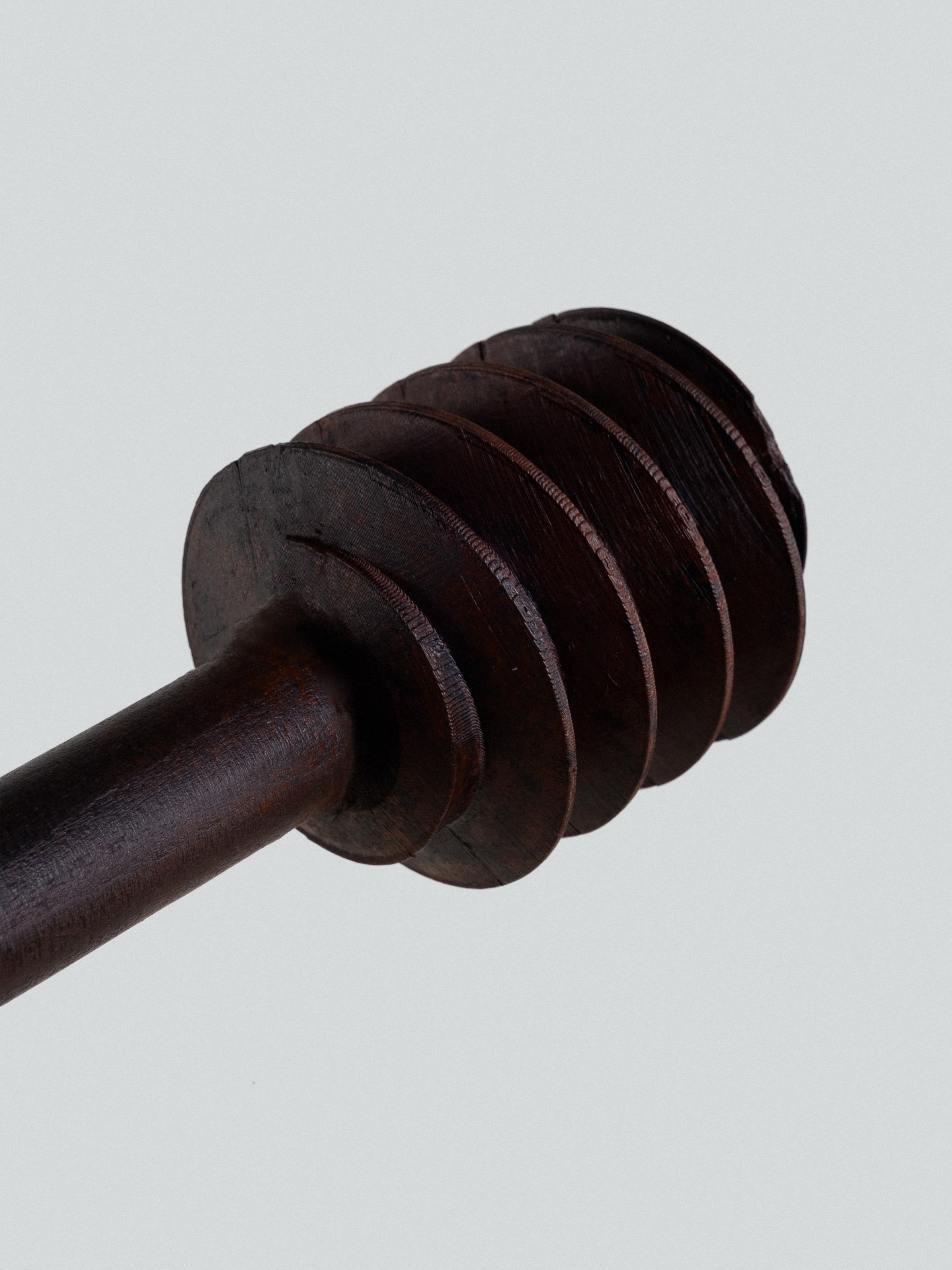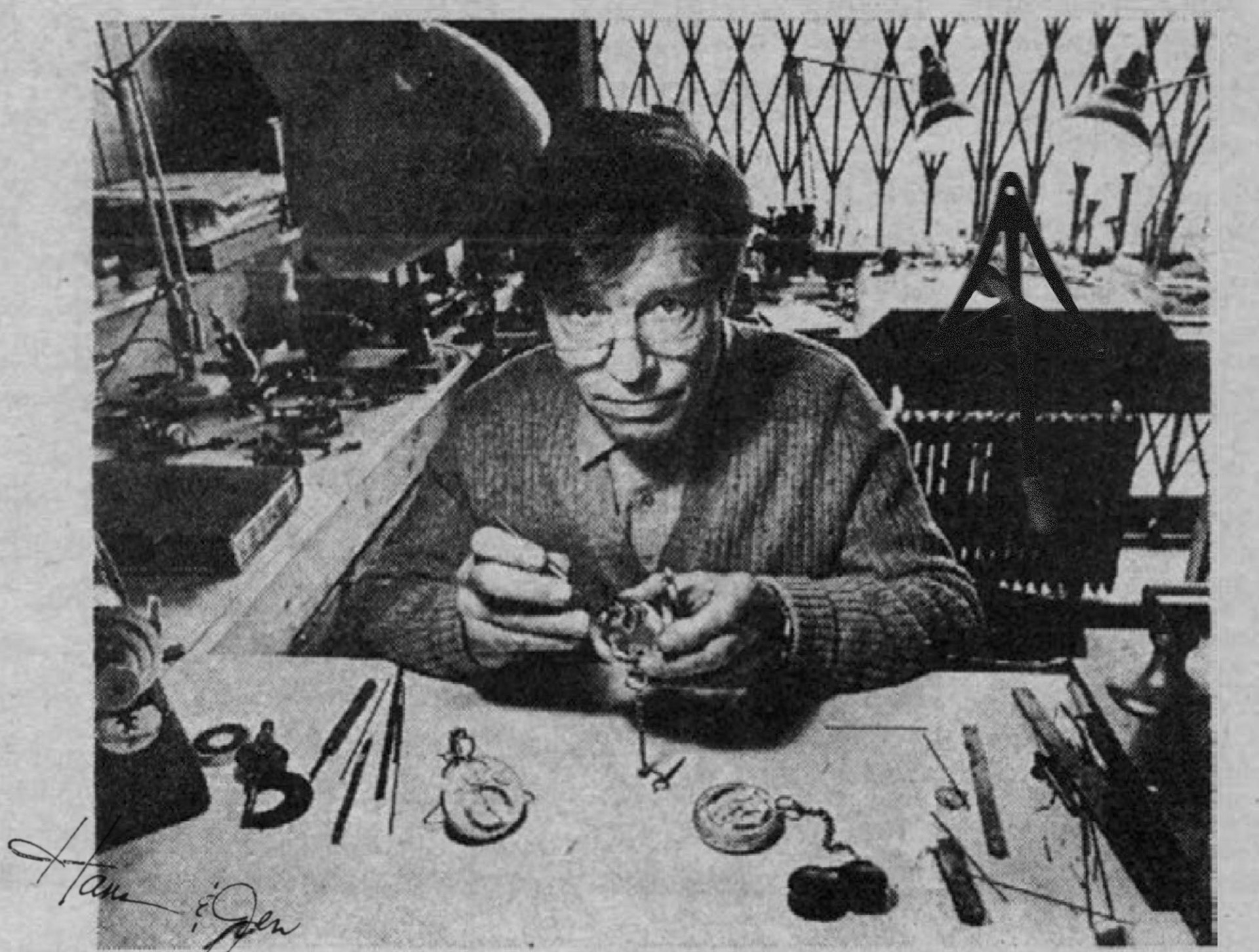The “chidder-puller” was an essential tool in early watchmaking. This tool was used to operate and start the mechanism of early church clocks. It derives from the word “chidding”, a village term of “chilling”. The villagers considered it a very quick operation, and that master would just be winding (chidding -> chilling) clocks up in the church tower and charge a lot of money for it at the end.
Church clocks at that time were mechanically operated pendulum clock work that had to be wound up at certain intervals. Two heavy pendulums set the escapement of the mechanism in motion, which started the clock. Each master had his own tool, which could only be used for his own work. There was a great deal of secrecy surrounding these tools, to the extent that almost no written or pictorial sources have survived, apart from a couple of rumours and a few poorly preserved blueprints.
The winders were handed down from father to son or from watchmaker to apprentice, so that the clock movements remained in use after the death of the craftmen.
With the advent of industrialisation, these traditional movements were gradually replaced by electric motor-driven counterparts, so that the memory of the chidder-puller has now almost entirely disappeared from our consciousness.
A cséderhúzó a korai órásmesterség elengedhetetlen eszköze volt, mely a korai templomórák szerkezetének működtetésére, elindítására szolgált. Neve a *cséderelés* szóból ered, mely egy falusi gúnyos kifejezés, a *héderelés* szóból eredeztethető. A falusiak úgy tartották, hogy a művelet gyors elvégzése helyett a mester csak fent cséderel (héderel) órákat a templomtoronyban, és a végén sok pénzt elkér érte.
A templomórák akkoriban mechanikusan működtetett ingaóra-szerkezetek voltak, melyeket bizonyos időközönként fel kellett cséderelni. Két nehéz inga hozta mozgásba a szerkezet gátlóművét, amitől elindult az óra. Minden mesternek saját eszköze volt, amely csak a saját szerkezeteihez volt használható. Nagyfokú titkolózás övezte ezeket az tárgyakat, olyannyira, hogy szinte semmilyen írásos vagy képi forrás nem maradt fent róluk, leszámítva egy-két szóbeszédet és néhány rossz állapotban fellelt tervrajzot.
A cséderhúzók apáról fiúra vagy órásmesterről inasra szálltak, így az órásmester halála után is használatban maradtak a hozzá tartozó óraszerkezetek. Az iparosodás beköszöntével ezeket a hagyományos szerkezeteket sorra elkezdték leváltani az elektromotorral működtetett társaik, így a cséderhúzó emléke mára már szinte teljesen kikopott a tudatunkból.


